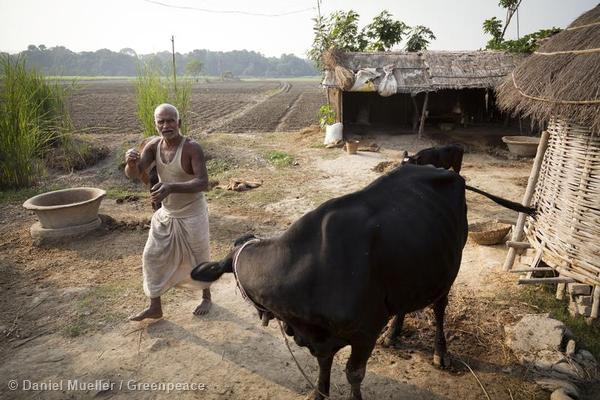Lack of water and energy are the two biggest constraints to growth in South Asia, warned experts gathered at this year’s Stockholm World Water Week.
Water and energy are crucial to drive economic growth and pull the 500 million remaining people out of poverty in South Asia, but governments do not recognise the growing confrontation between these two resources.
South Asia’s water and energy crises are deeply intertwined. Growing energy demand drives water shortages and lack of water fuels power outages. Drought-induced power cuts plunged northern India into darkness in what was the largest blackout in the country’s history in July 2012. The recent deadly floods in Nepal and northern India affected thousands of people and destroyed a number of hydropower plants.
The sub-continent is racked by energy shortages. Nepal – despite the country’s bounteous hydropower potential – suffers 18-hours-a-day power cuts in the capital Kathmandu. Energy and water shortages have stunted Pakistan’s development for decades and power shortages spark recurrent street protests.
Bhutan is the only energy sufficient country in South Asia. The isolated mountain state has also boosted its economy by exporting excess hydropower to India.
Spotlight on India
India’s water-energy crisis is particularly stark, according to a new research report from HSBC launched at World Water Week. India’s annual water withdrawal is the highest in the world, but its water productivity (GDP per unit of water) is one of the lowest. This is largely due to inefficient agricultural practices. The country’s water storage capacity is also dangerously low (at 200 cubic metres per person, compared to 2,500 in China and almost 6,000 in the US).
The expanding energy sector exacerbates problems. Half of India’s coal plants are in water stressed regions, and 40% of the over 200-megawatts of new capacity recently approved by the government is also in highly stressed regions.
“It’s even harder to get data on water and energy in India than China,” said Zoe Knight, head of HSBC’s Climate Change Centre and co-author of the report on India’s water crisis. Even the working group of India’s Planning Commission for the 12th Five Year Plan failed to locate any estimates on water surface availability, the report claims.
The massive expansion of irrigated land in India and Pakistan over the last 30 years fuelled by diesel subsidies for farmers to pump groundwater has sucked aquifers dry in major grain-producing states. Eastern India has the opposite problem: in areas where groundwater is ample, replenished annually by flood waters in the Ganga basin, state governments have used permits and licensing rules to restrict groundwater use – cutting off poor farmers access to water.
Himalayas at heart of energy water crisis
The Himalayas lie at the heart of the region’s energy and water “nexus” (policy jargon for the links and interdependencies between these two resources). The rivers that drain these mountains provide water to most of Asia and the hydropower potential of its mountains is integral for national plans to meet energy demand. Some 150,000 megawatts of new projects are proposed over the next 20 years, which if built will give the Himalayan region the highest concentration of dams in the world.
“But the Himalayas have been ignored in the nexus debate”, said Aditi Mukherji from the International Centre for Integrated Mountain Development (ICIMOD) at the sidelines of the meeting. She argued mountain communities should be rewarded for the role they play protecting water supplies, ecosystems and providing energy for people downstream.
Governments need to step up
Governments across the world have failed to realise the need to integrate energy and water into policy planning.
This is not an issue only in South Asia. The International Energy Agency does not use models based on future water supplies, said Paul Faeth from CNA Corporation and contributor to a new book on the energy water nexus. The IEA’s 2014 global outlook report fails to mention water even once.
Faeth called for greater energy efficiency as the best way to save water, as well as deploying renewables and avoiding the installation of coal plants in water stressed regions.
Regional cooperation – such as power trading between countries – could ease tightening resource constraints, said William Rex from the World Bank’s central water unit. But in South Asia so far such solutions have been largely scuppered by political suspicions.

